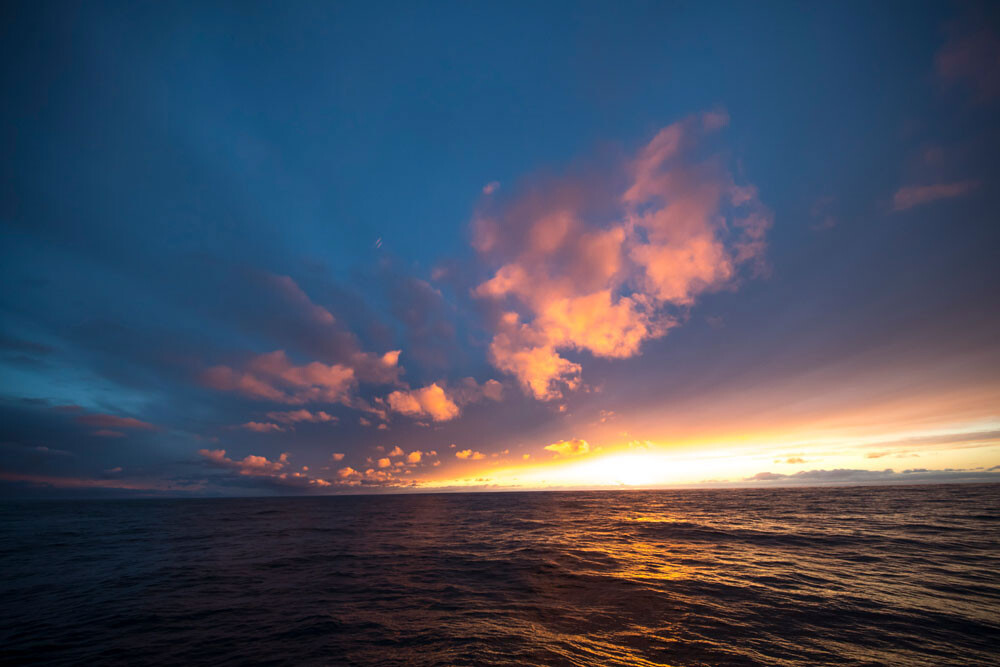
For geophysicist Irina Filina and fellow members of Expedition 396, time-traveling to the volcanically active sauna of prehistoric Earth meant drilling for long-cooled magma resting miles beneath the chop and churn of the North Atlantic.
It also meant 61 consecutive days of 12-hour shifts aboard the 200-foot-tall, 470-foot-long JOIDES (JOY’-dehs) Resolution, one of just two drilling ships in the world dedicated exclusively to scientific research.
From Aug. 6 through Oct. 6, the assistant professor of Earth and atmospheric sciences traded her desk at the University of Nebraska–Lincoln for the deck of the research vessel, which has served as the floating workhorse of near-continuous scientific expeditions since the mid-1980s.
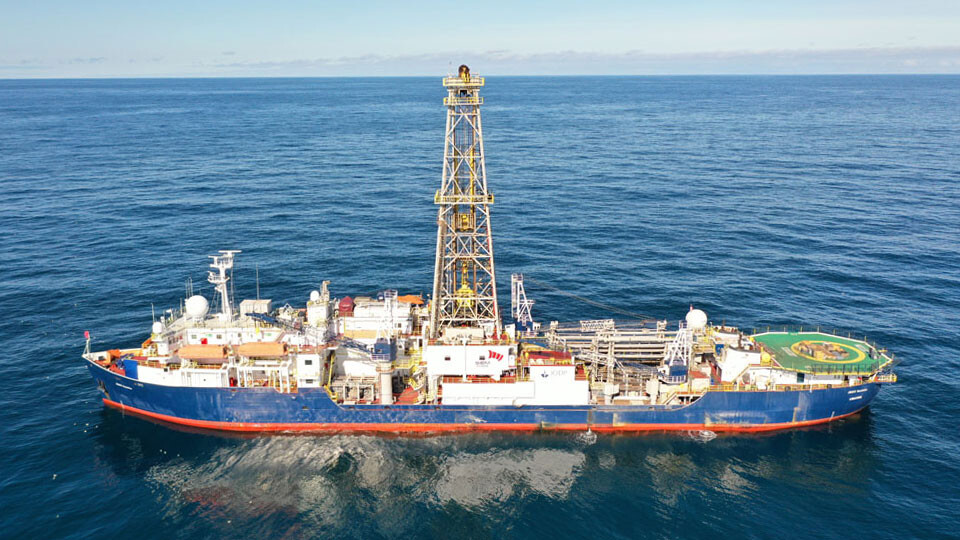
Filina and nearly 100 others embarked from Reykjavík, Iceland, to extract cylindrical samples of rock and sediment from a stretch of Earth’s crust that resides beneath the North Atlantic Ocean and emerges at the western coast of Norway.
That stretch has come to interest geologists because it includes a sizable transition from oceanic to continental crust that was formed during the breakup of continents and is now completely covered by sediment. Just beneath that sediment lie major chunks of igneous rocks, once magma-hot, now stone-cold evidence of the especially active volcanism occurring tens of millions of years ago.
Much of that magma spewed forth roughly 55 million years ago, right around the time that the average global temperature shot up by about 9 degrees Fahrenheit in just a few thousand years — baking the planet with an extinction-driving heat not felt since.
“There was a lot of volcanic activity — much, much more than we currently have,” Filina said. “And we still do not understand why that amount of volcanism occurred at that time.”
For the team, that question lingers above all others. But the others are numerous: Which of several competing hypotheses actually explains what drove the volcanism? How much of the unprecedented global warming was due to magma breaching the planet’s surface versus simply penetrating and heating crust from the mantle below it? When it did breach, was it doing so underwater or while exposed to air?
Narrowing down the ranges of melting temperatures and pressures, eruption rates, and the ages of lava, gases and debris produced by the volcanism, among other variables, should at least get the team closer to answering those questions. And extracting cores of rock and sediment is essential to narrowing down those ranges.
Recovering a core from any one site in the North Atlantic really only offers insights into that single location, Filina said. But plucking them from various sites, then correlating them with both each other and with other information — seismic data, magnetic and gravitational fields — can begin to fill gaps much as magma does when pluming up through rifts of continental crust.
“I want to blend them all into one story,” Filina said of the data collected from Expedition 396 and others before it. “Each data set is like a piece of the puzzle for me; my job is to put those pieces together. The puzzle will not be complete, no matter what. We just want to make it as coherent as possible.”
The team initially set out to extract cores from nine sites. But thanks to some uncharacteristically placid weather — “The ocean was very, very nice to us,” Filina said — Expedition 396 proved an overachiever, managing to collect cores from 10 sites instead.
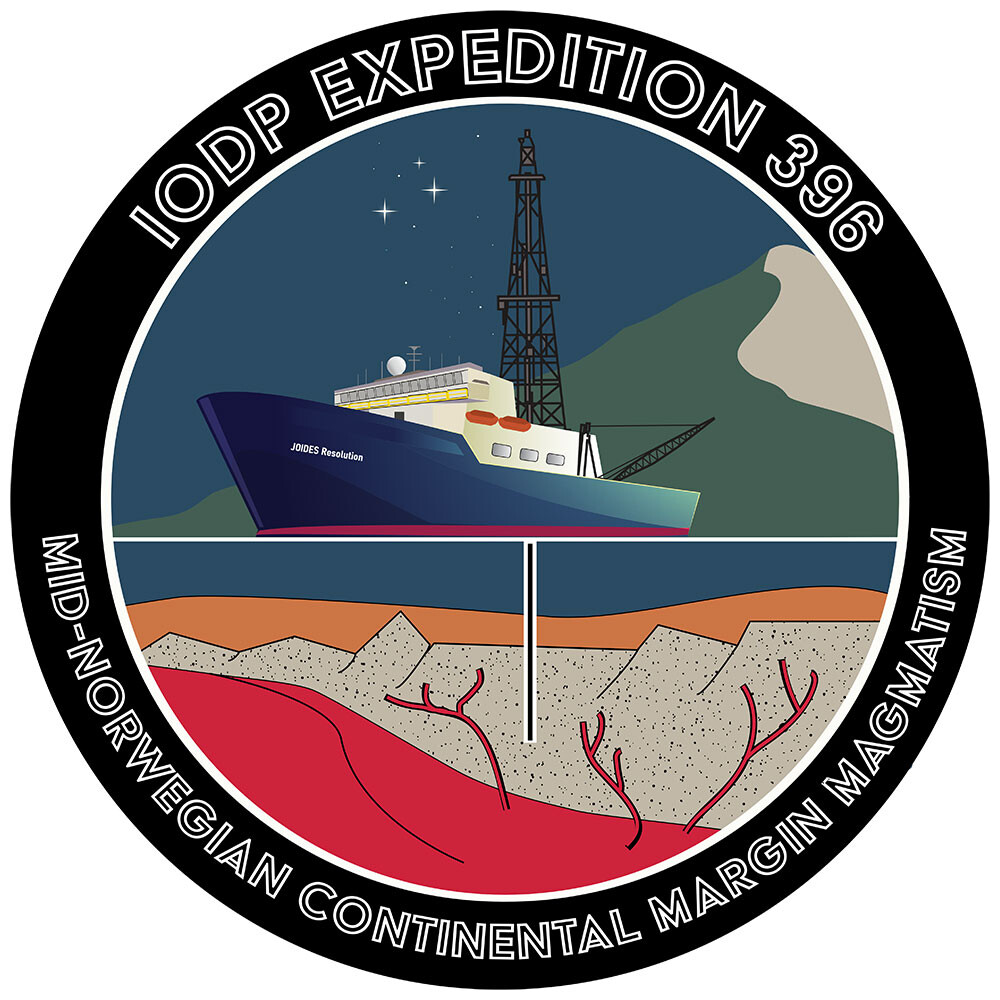
That schedule sometimes left Filina trying to tread water amid the rush of incoming cores and ongoing data collection. Her 12-hour shifts were spent primarily in a lab, running each core through a series of instruments that analyzed and recorded the physical properties of the recovered rock samples.
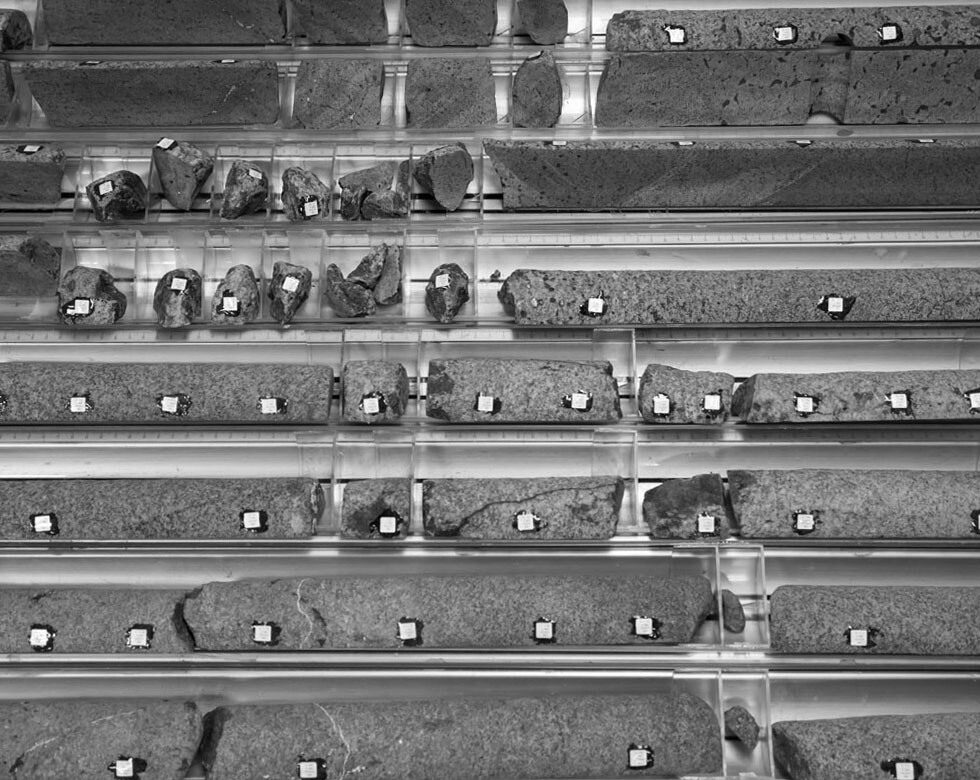
“They can’t split the core until all physical properties are measured,” she said. “It adds a little bit of pressure, because you know that everyone is waiting for you. And you have to make sure that every core runs through all of the instruments, in sequence, and that you do not miss anything. So it can be a little bit overwhelming.
“It was very intense. By the end, we all kind of hoped for bad weather just to have a little break!”
The intensity manifested in multiple ways. Filina’s plans to exercise regularly, for instance, fell by the starboard as the realities of working through weekends came to take their toll even on an academic accustomed to long hours. Opportunities to rest took precedence over sightseeing, though she and the team did spot the occasional pilot whale.
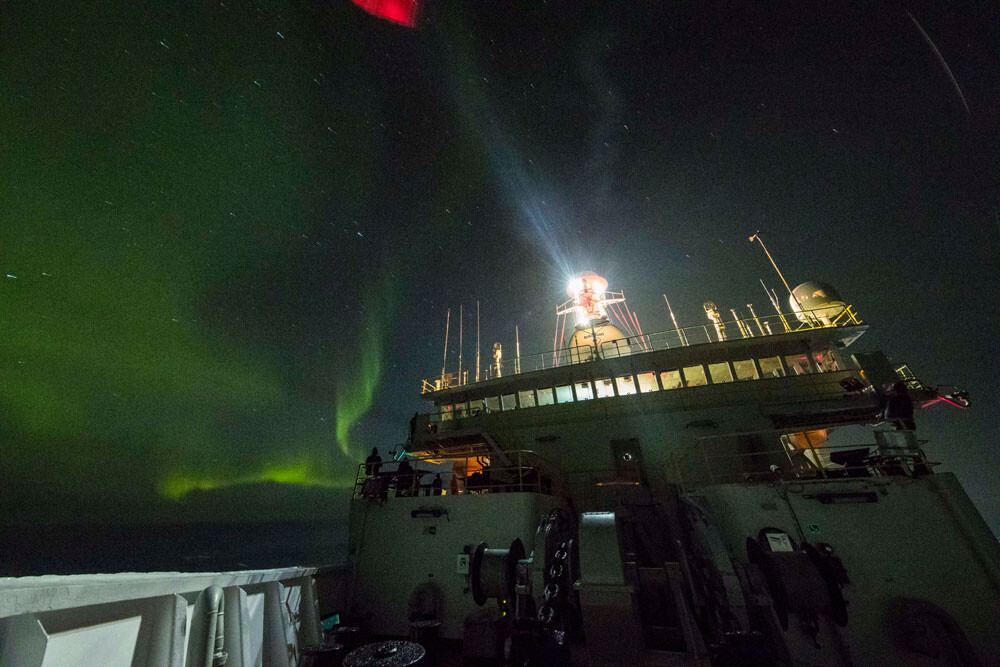
Fortunately, Filina was enjoying the company of a scientifically kaleidoscopic team that was giving her a crash course in specializations and approaches she rarely encountered ashore.
“I got to meet many, many, many good people,” she said. “You have a whole spectrum of expertise just to analyze that data, and you get exposed to multiple aspects, which I think is extremely cool. You’re learning from those people. You see how they analyze their data: what is important to them, what conclusions they draw, and how those correlate to your conclusions.”
Filina said the “fantastic atmosphere” extended from the scientific to the interpersonal and cultural. The nearly 20 scientists working alongside her spanned countries ranging from Germany, India and England to Japan, France and China. The International Ocean Discovery Program, which manages the JOIDES Resolution expeditions, comprises 22 nations in all.
“We all speak different languages,” said Filina, who’s fluent in Russian as well as English. “We all represent different cultures. And our crew tried to accommodate us. For example, our cook would have Indian cuisine night or Mexican cuisine night, just to bring something different every week and give us a little bit of that international feeling.”
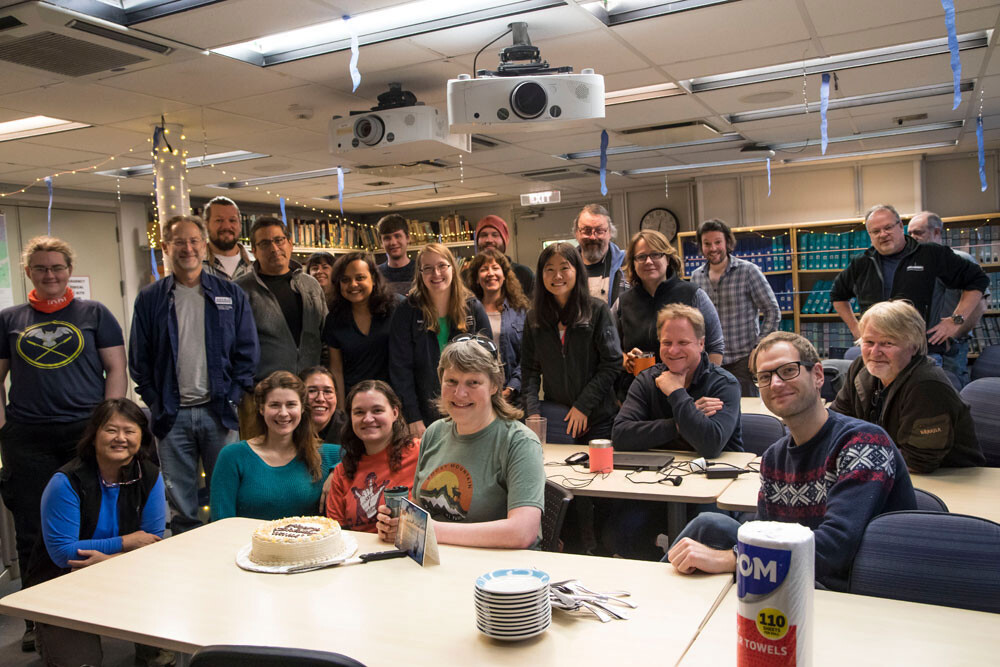
As much as she appreciated the bonds of the temporary family forming aboard the research vessel, the extended time apart from her husband and two children proved its own challenge, she said.
“As time goes by, we all become homesick,” Filina wrote on a JOIDES Resolution blog during her seventh week aboard the ship. She made do with daily 15-minute chats over Zoom, which she called “so important” to fighting her homesickness and contending with the rigors of her schedule. Email-assisted games of chess with her 11-year-old son helped, too.
Yet even upon disembarking back at Reykjavík in early October, boarding a flight to the States, and finally rejoining her family after more than two months apart, Filina said it took time to regain her footing on terra firma.
“I was walking with my daughter, and everything looked so weird, because I had become accustomed to seeing only the sea around, no matter where you look,” she said. “And here, there are all of these beautiful trees with many wonderful autumn colors. I told my daughter that I felt like a small piece of a whole that had just fallen out, and someone put it back in. The edges matched, but there were no bonds holding it in.
“And she said, ‘Mom, don’t worry, you will glue back in!’ So my first several weeks were dedicated to this process of gluing in, just getting back to normal.”
The readjustment may have taken some time, the distance from family may have been taxing, and the expedition may have been demanding, but Filina said she would do it all again — and that she intends to. In fact, she emerged from it all with one primary takeaway: I wish I had done this earlier in my career. Why hadn’t she? Blame, in part, the pervasive impostor syndrome.
“I was always a little bit scared that there was someone better than me, smarter than me, ahead of me who should be there instead,” she said. “Now I regret very much that I didn’t apply before.”
Two broader misconceptions that she traced back as far as high school, and hopes to dispel, may have contributed to her hesitation, too. She believed, for one, that “humankind had answers to all scientific questions,” that there were no research frontiers left to explore, or worth exploring. And even if there were, she thought, surely there were more than enough people already lining up to explore them.
“And both are wrong,” she said with a laugh, before wondering whether the same assumptions may have misguided enough others, like her, to keep those waters uncharted. “There are many questions that we still have no idea about.
“There are many discoveries ahead of us, and we need young people, ambitious people, to solve those problems. I want the younger generation to be brave, go for it, get involved and figure it out!”
